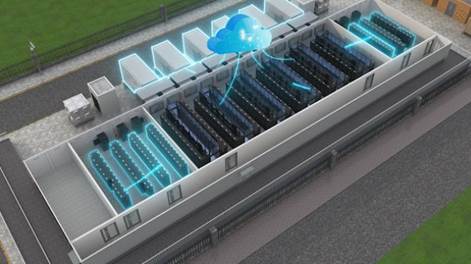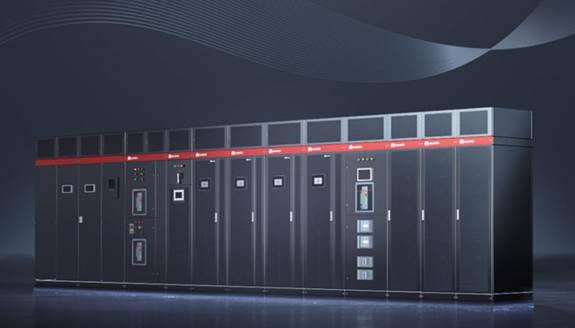Effective management and
maintenance of data center facilities are critical to
achieving continuous uptime, robust security, and high energy efficiency. With
the growing reliance on digital technologies, optimizing data center operations
becomes vital. Implementing best practices ensures that data centers operate seamlessly
and efficiently. This article delves into the essential components of managing
data centers, explores the best practices for maintaining top performance,
highlights strategies to enhance energy efficiency, and emphasizes
comprehensive approaches to risk management and security.
Essential Components of Data Center
Facilities Management
Physical Infrastructure and Layout
The physical infrastructure of a
data center includes the space, layout, and arrangement of servers, storage,
and networking equipment. Ensuring an organized layout promotes efficient
airflow and simplifies maintenance procedures. Modern designs like Huawei’s
Smart Modular and Prefabricated Modular DCs offer scalable and adaptive
solutions, allowing businesses to expand their infrastructure as needed while
maintaining optimal performance.
Cooling
and HVAC Systems
Effective cooling is imperative to
prevent overheating and prolong the lifespan of data center hardware. Advanced
cooling solutions, such as those provided by Huawei, offer energy-saving and
reliable options. Implementing smart cooling systems like in-row cooling,
hot/cold aisle containment, and liquid cooling can significantly enhance a data
center’s energy efficiency and operational reliability.
Power Management and Backup Systems
Power management, including backup
systems, is essential for ensuring uninterrupted data center operations. By
incorporating redundant power supplies and uninterruptible power supplies
(UPS), data centers can maintain continuous power during outages. Huawei’s
AI-powered smart power distribution systems optimize power efficiency and
reliability, ensuring a steady supply of energy while also contributing to
sustainable operations. This enhances overall data center resilience and
minimizes downtime risks.
Best Practices for Ensuring Optimal
Data Center Performance
Preventive Maintenance Techniques
Preventive maintenance is a
proactive approach that includes routine inspections and servicing to identify
potential issues before they develop into major problems. By regularly checking
and updating software, firmware, and hardware components, the risk of
unexpected failures is minimized. Establishing and following a comprehensive
maintenance schedule ensures that all systems continue to operate efficiently,
improving overall performance and extending the life of equipment.
Emergency
Maintenance Procedures
Emergency maintenance deals with
unforeseen incidents that may disrupt data center operations. Establishing
clear emergency protocols, along with training personnel to respond quickly,
ensures minimal downtime and continuity. Documenting procedures for frequent
issues like power failures, equipment malfunctions, or network interruptions
enhances response efficiency. This preparation ensures swift, effective
actions, reducing the impact of such emergencies on service delivery and system
reliability.
Performance Monitoring Tools and
Technologies
Utilizing advanced performance
monitoring tools to track and analyze key data center metrics is essential for
identifying inefficiencies and optimizing operations. By implementing
cutting-edge technologies like Huawei's intelligent Data Center Infrastructure
Management (DCIM) systems, operators can gain real-time insights into critical
factors such as power usage, cooling efficiency, and overall system
performance. This empowers proactive management and ensures continuous
optimization of data center operations.
Effective Strategies for Enhancing
Energy Efficiency in Data Centers
Implementing
Green Technologies
Green technologies play a pivotal
role in minimizing the environmental impact of data centers. By utilizing
energy-efficient hardware, enhancing server utilization, and adopting
AI-powered energy management systems, these innovations significantly reduce
energy consumption. Huawei’s green technologies seamlessly integrate digital
intelligence to optimize operational efficiency, ensuring sustainable practices
while enhancing overall data center performance and contributing to a greener
future.
Energy-Efficient Cooling Solutions
Adopting energy-efficient cooling
solutions can significantly reduce a data center's energy consumption and
operational costs. Techniques like free cooling, which utilizes outside air to
regulate temperatures, and liquid cooling systems, which offer precise and
targeted cooling, help improve efficiency. Huawei's advanced smart cooling
solutions provide optimal energy savings, ensuring both environmental
sustainability and the reliability required for continuous operations.
Leveraging Renewable Energy Sources
Incorporating renewable energy
sources, such as solar and wind power, into data center operations helps reduce
reliance on traditional power grids, leading to lower carbon emissions and
environmental impact. By carefully evaluating the compatibility of renewable
energy solutions and integrating them into the existing power infrastructure,
data centers can significantly contribute to sustainability goals while
ensuring reliable, efficient energy usage for long-term operations.

Comprehensive Risk Management and
Security in Data Center Facilities
Physical
Security Measures
Robust physical security measures
are critical in protecting data centers from unauthorized access and potential
physical threats. By implementing a combination of perimeter security,
surveillance systems, and controlled access points, data centers ensure that
only authorized personnel are allowed access to sensitive areas. Additionally,
regular security audits and monitoring procedures help maintain and enforce
stringent access control protocols, further enhancing the overall security of
the facility.
Data Protection and Cybersecurity
Strategies
Securing data in Internet Data
Centers (IDCs) involves implementing strong encryption, firewalls, and
intrusion detection systems. Regularly updating these security measures is
essential to ensure resilience against evolving cyber threats. Additionally, training
staff on cybersecurity awareness, monitoring for suspicious activity, and
having a rapid response plan to address potential breaches are all critical
components of a comprehensive data protection strategy, ensuring long-term
security and reliability.
Disaster Recovery and Backup Systems
Establishing disaster recovery
protocols and maintaining robust backup systems are crucial for effective data
preservation. Regularly updating, testing, and verifying backup systems ensures
data can be restored quickly in the event of data loss or corruption. Solutions
from Huawei offer integrated disaster recovery systems designed to minimize
downtime, ensuring business continuity and reducing the impact of critical
situations on operations.
Conclusion
In-depth
knowledge and application of best practices are crucial for the optimal
management and maintenance of data centers. By focusing on key components,
enhancing energy efficiency, and implementing comprehensive risk management and
security measures, data center operators can ensure reliable, secure, and
sustainable operations. Adopting solutions like those offered by Huawei further
reinforces a data center’s capacity to thrive in the digital era. Effective
data center management is pivotal to powering our increasingly digital world.
Embracing these best practices ensures your facility remains at the forefront
of technology, security, and efficiency.




